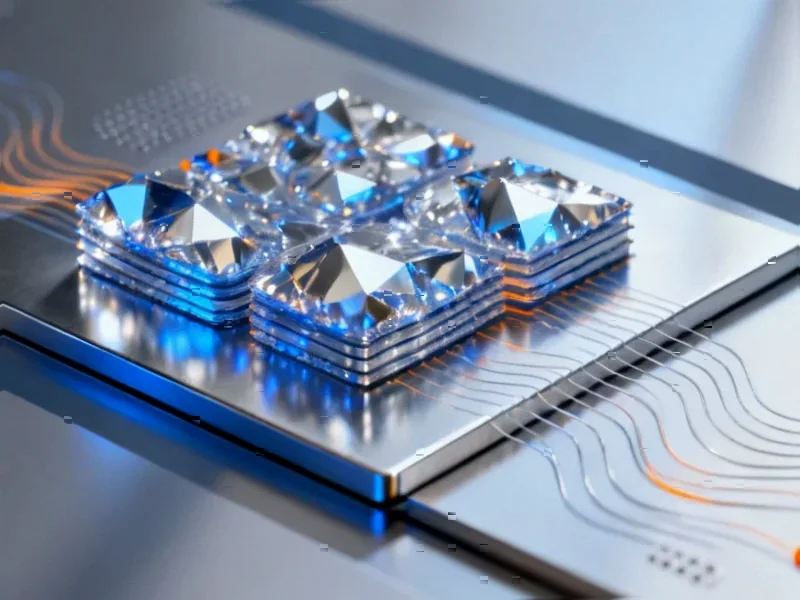According to SciTechDaily, researchers from the USC Viterbi School of Engineering and School of Advanced Computing have created artificial neurons that physically replicate the electrochemical behavior of real brain cells. The breakthrough, detailed in Nature Electronics and led by Professor Joshua Yang, introduces “diffusive memristor” technology that uses silver ion movement rather than electron flow for computation. This approach enables each artificial neuron to occupy the space of just one transistor compared to tens or hundreds in conventional designs, potentially reducing energy consumption by orders of magnitude while advancing progress toward artificial general intelligence. The research represents a fundamental shift from simulating neural activity to physically reproducing biological mechanisms.
The Hardware Learning Revolution
This breakthrough signals a fundamental shift in how we approach artificial intelligence development. For decades, we’ve been trying to make software smarter while running it on hardware fundamentally incompatible with biological learning principles. Professor Yang’s team has recognized that the brain’s efficiency comes from its physical architecture – learning occurs through ion movement across membranes, not through software algorithms running on general-purpose processors. This hardware-based learning approach could finally bridge the gap between artificial and natural intelligence by building systems that learn the way brains do, rather than forcing brains to learn the way computers compute.
Solving AI’s Energy Crisis
The energy implications of this technology cannot be overstated. Current large language models and AI systems consume megawatts of power – equivalent to small towns – while the human brain operates on roughly 20 watts. As AI adoption accelerates, this energy consumption becomes unsustainable both economically and environmentally. The diffusive memristor approach offers a path to maintaining computational capability while reducing energy demands by orders of magnitude. This isn’t just an incremental improvement; it’s the kind of breakthrough that could make widespread edge AI deployment feasible, enabling intelligent systems in everything from smartphones to sensors without requiring massive power infrastructure.
The Road to Commercialization
While the research demonstrates remarkable capability, the path to commercial implementation faces significant hurdles. The use of silver ions presents manufacturing compatibility challenges with existing semiconductor processes. The industry has invested trillions in silicon-based fabrication, and any new technology must either integrate with these processes or justify the enormous capital expenditure required for new manufacturing infrastructure. We’re likely to see hybrid approaches first, where diffusive memristors complement rather than replace existing silicon technology. The real test will come when researchers attempt to scale from individual neurons to complex networks while maintaining the demonstrated efficiency advantages.
Toward True General Intelligence
Perhaps the most exciting aspect of this research is what it reveals about our approach to artificial general intelligence. For years, the AGI community has debated whether we need to better understand biological intelligence to create artificial general intelligence, or whether purely mathematical approaches would suffice. This work strongly suggests that physical embodiment matters – that the wetware of the brain contributes to its capabilities in ways that pure computation cannot replicate. If these brain-faithful systems can help uncover new insights into neural function, we may be entering an era where neuroscience and computer engineering mutually accelerate each other’s progress toward understanding and replicating intelligence.
Transforming Computing Architecture
The long-term implications for computing architecture are profound. We’re potentially witnessing the beginning of a transition from von Neumann architecture – which has dominated computing for decades – to truly brain-inspired systems. This could lead to computers that don’t just calculate faster but think differently, with capabilities like one-shot learning, contextual understanding, and adaptive reasoning that current systems struggle to achieve. The integration of these neurons into larger networks will be the critical next step, and success there could trigger a redesign of everything from cloud infrastructure to personal devices. The companies that master this transition early will likely dominate the next era of computing, much as those who embraced GPUs for AI gained significant advantages in the current landscape.




